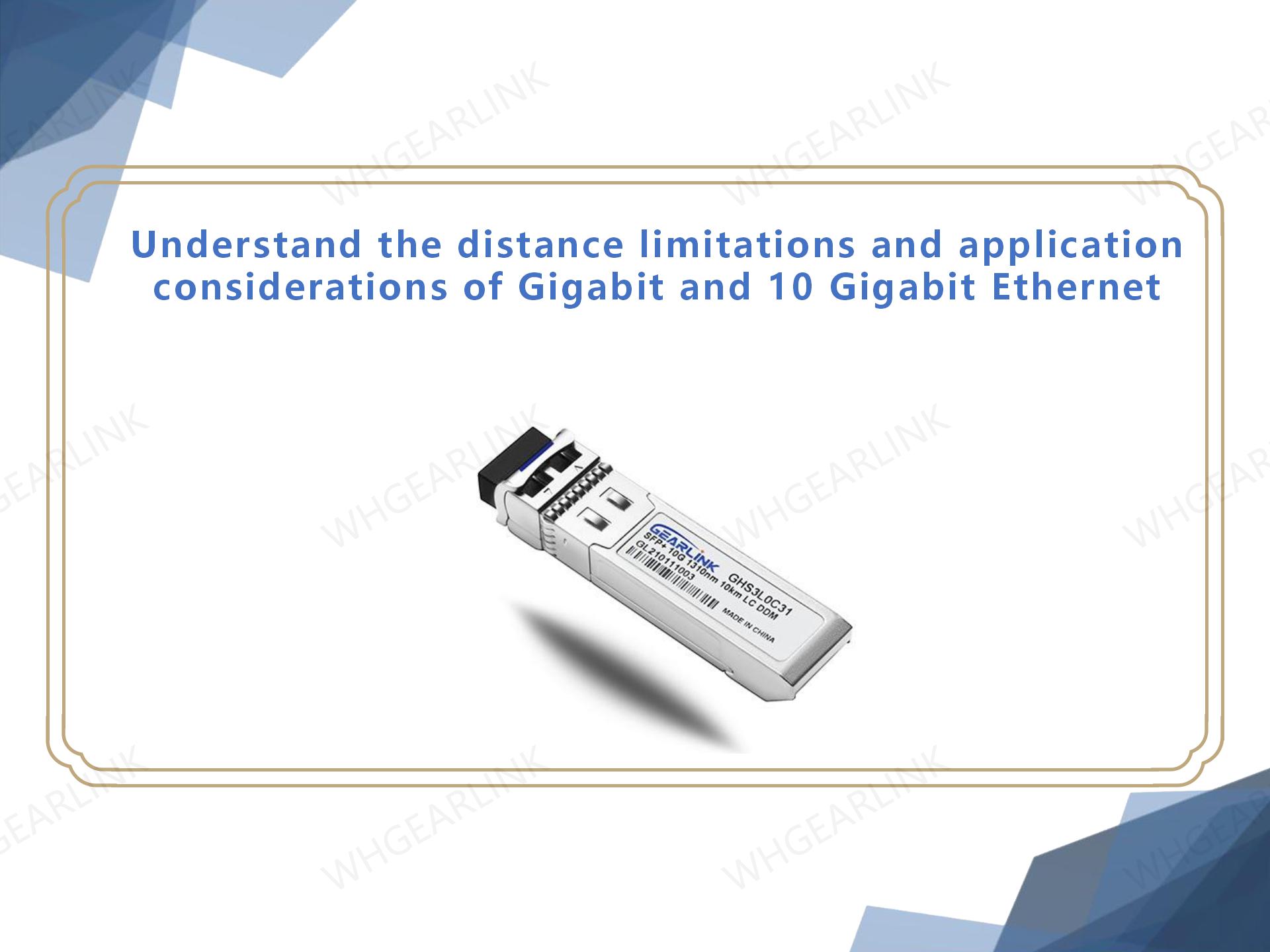With the rapid development of network technology, Gigabit Ethernet and 10 Gigabit Ethernet have become mainstream technologies in enterprise networks. However, different Ethernet technologies have different distance limitations, which directly affect their application range and applicable environment. This article will detail the distance limitations of Gigabit and 10 Gigabit Ethernet, and how to properly apply them to achieve the best network performance.
With the rapid development of network technologies, Gigabit Ethernet and 10 Gigabit Ethernet have become mainstream technologies in enterprise networks. However, different Ethernet technologies have different transmission distances in different media, which directly affects their application range and applicable environment. This article will detail the distance limitations of Gigabit and 10 Gigabit Ethernet, and how to properly apply them to achieve the best network performance.
Gigabit Ethernet is a commonly used network transmission technology that supports high-speed data transmission. Under different transmission media, the transmission distance of Gigabit Ethernet will vary. The following are typical transmission distances for Gigabit Ethernet in various media:
Twisted pair
The transmission distance of Gigabit Ethernet on Category 5, Category 5e, and Category 6 UTP twisted-pair cables can reach 100 meters, which can meet the needs of wiring in buildings.
Multimode fiber
Multimode fiber is usually used for shorter distance transmission. In the case of using multimode fiber, the transmission distance of Gigabit Ethernet can generally reach 550 meters.
Single-mode fiber
Single-mode fiber is suitable for long-distance transmission. In the case of using single-mode fiber, the transmission distance of Gigabit Ethernet can exceed 120 kilometers.
10 Gigabit Ethernet is a local area network technology with a transmission rate of 10 Gigabits per second, which uses the IEEE 802.3ae standard. Due to its extremely fast transmission speed, it is very important to use a high-quality transmission medium. At present, there are mainly the following types of transmission systems for 10 Gigabit Ethernet:
Copper cable
When 10 Gigabit Ethernet uses CAT6A copper cable, the maximum transmission distance can reach 100 meters. Compared with Gigabit Ethernet, 10 Gigabit Ethernet has the same transmission distance when it is transmitted over copper cables.
Multimode optical fiber
10 Gigabit Ethernet can usually achieve short-distance transmission when using multimode optical fiber. Under the common OM3 and OM4 multimode fiber standards, the transmission distance of 10 Gigabit Ethernet is generally 300 meters.
Single-mode fiber
Single-mode fiber is a medium suitable for long-distance and high-speed transmission. In the case of using single-mode fiber, the transmission distance of 10 Gigabit Ethernet can reach 80 kilometers.
It should be noted that these transmission distances are determined according to general optical fiber and copper cable standards, and do not represent all situations. The transmission distance is also affected by other factors, such as signal attenuation, fiber quality, network equipment and topology, etc. In practical applications, relevant standards and specifications should be followed, and specific network environments and requirements should be considered to ensure network transmission quality and performance.
Select a suitable transmission medium
For Gigabit and 10 Gigabit Ethernet, it is very important to choose a suitable transmission medium, which directly determines the transmission distance and performance stability. Therefore, when selecting a transmission medium, it is necessary to make a reasonable choice according to the actual environment and needs.
Pay attention to the selection of high-quality equipment
For enterprises, high-quality network equipment can ensure the reliability and stability of the network. Therefore, when choosing network equipment, companies need to choose brand equipment that customers trust, which can reduce network interruptions and transmission errors.
Note the topology of the network
A proper network topology can better facilitate data transmission and optimize network performance. Therefore, factors such as transmission distance, network capacity and performance need to be considered when determining the network topology.
Regularly detect network equipment
The health status of network devices will directly affect the operating efficiency and stability of the network. Therefore, regular testing and maintenance of network equipment is required to ensure the normal operation of the network.
Gigabit and 10 Gigabit Ethernet are commonly used technologies in enterprise networks, featuring fast transmission and good stability. According to different transmission media, they have different transmission distances and performances, so when selecting and applying, they need to be selected and configured according to actual needs and environments. When enterprises apply and configure networks, they need to pay attention to key factors such as the quality of transmission media, equipment quality, network topology, and regular maintenance of equipment, which will directly affect the operational efficiency and stability of the network.


